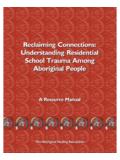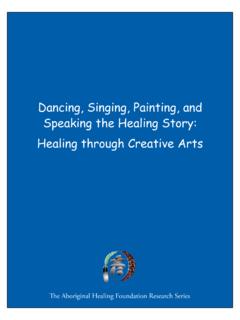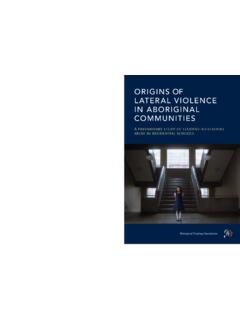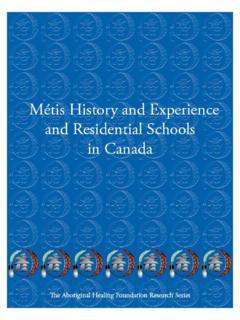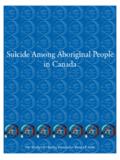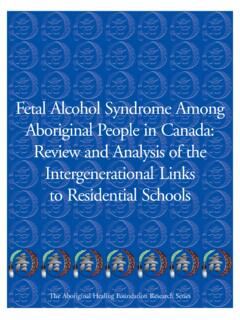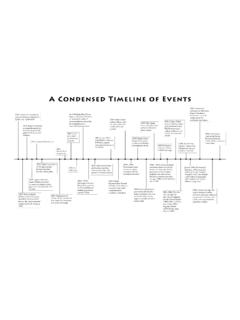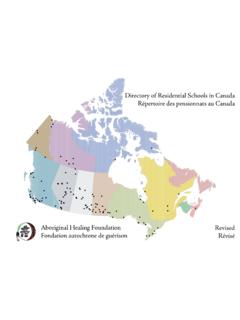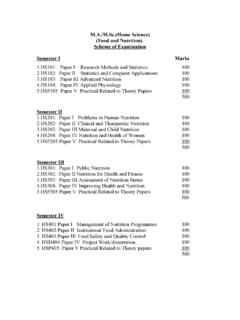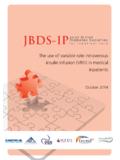Transcription of Misconceptions of Canada’s Indian Residential …
1 Misconceptions of canada s Indian Residential school SystemThere is ample evidence that the church and government worked together to keep known abuses from public view. Their efforts however failed. As early as 1920, Canadians could read published reports of the conditions in the Residential school . These conditions included inadequate nutrition, inadequate health standards, and inadequate staff training. Bryce, a government inspector of the schools, concluded that the system was a national crime. Even by the standards of the day, the system was appalling. Bryce s findings were published in The Montreal Star and Saturday Night Magazine. Nothing however funding of Aboriginal education is a legal obligation negotiated, in Treaty, between the Government of canada and Aboriginal peoples.
2 In exchange for sharing their territories, Aboriginal people wanted schools to provide skills to their children just as the schools provided them to non-Aboriginal children. They wanted a system based upon consent, not coercion. Aboriginal people did not request cultural assimilation, nor did they request for their children physical and sexual abuse, deprivation, and students experiences of Residential schools were not all bad. Different people had differing experiences. Many dedicated, good people worked in the system . The system itself however was designed to educate & colonize a people against their will, as the missionary Hugh McKay admitted in 1903. The policy of forced assimilation had many Aboriginal and non-Aboriginal critics, but in each case the critics were silenced.
3 A good example is the missionary Wilson, who came into conflict with the church over his criticism of forced assimilation and his promotion of Aboriginal cultures, languages and political autonomy. In short, not everyone believed the schools were promoting good the period 1800-1990, over 130 Residential (boarding, industrial) schools had existed at one time or another. The number of active schools peaked at 80 in 1931. In the early 1900s about 1 6 of children between 6 and 15 attended these schools. Geoffrey York reports that by the 1940s, about 8,000 Indian children half the Indian student population were enrolled in 76 Residential schools across the , these are national averages. In some regions the North, British Columbia, and the Prairies for examples the percentages were higher.
4 There are communities which had all their children forcibly removed. The Aboriginal Justice Inquiry of Manitoba which characterized the Indian Residential school system a conscious, deliberate and often brutal attempt to force Aboriginal people to assimilate noted that for the first time in over 100 years, many families are experiencing a generation of children who live with their parents until their teens. In any case, the consequences of the system are not adequately captured by statistics. Nor did the school system operate in isolation. Residential schools constituted one piece of a larger policy puzzle. Where the Residential school system left off in the effort to solve the Indian Problem the Indian Act and the Child Welfare, Reservation, and Justice systems took over.
5 It is these larger relationships, and the forced assimilationist policy that informs them, which account for much of the varied conditions of Aboriginal are approximately 75,000 former students alive today. Residential schools were in operation well into the last quarter of the 20th Century. Gordon Residential school in Saskatchewan did not close until the late 1990s. The abuses did not happen only a long time ago. Furthermore, the Residential school introduced features to Aboriginal communities which have been passed on from generation to generation these are spoken of collectively as the intergenerational legacy of the Residential school system . The consequences of the policy of forced assimilation are very much alive in Aboriginal communities.
6 Photo courtesy of Pamela Williamson 2007 The Aboriginal Healing Foundation. Address: 75 Albert Street, Suite 801, Ottawa, Ontario, K1P 5E7. Phone: (613) 237-4441. Toll-free: 1-888-725-8886. Fax: (613) 237-4442. Email: The Aboriginal Healing Foundation. Printing: Gilmore Printing. Unauthorized use of the name and/or logo of the Aboriginal Healing Foundation is prohibited. Non-commercial reproduction of this document is, however, encouraged. Ce document est aussi disponible en fran : Fred CattrollResidential Schools happened a long time ago. It s history now. Aboriginal people would be better off if they stopped dwelling on the past and got on with their livesNo one knew at the time about the conditions of Residential schoolsHardly any Indian children actually attended the schoolsThe schools were well-intentioned.
7 Everyone believed at the time that assimilation was a good policy. Many good people worked in the schools. The schools produced good as well as badAboriginal people asked for Residential schoolsPhoto: Bishop Breynat and students at Fort Resolution Boarding school , National Archives of canada . Photo courtesy of Christi Belcourt
